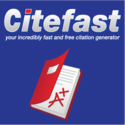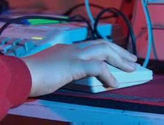-
About
- About Listly
- Community & Support
- Howto
- Chrome Extension
- Bookmarklet
- WordPress Plugin
- Listly Premium
- Privacy
- Terms
- DMCA Copyright
- © 2010-2025 Boomy Labs

 Deidra Johnson
Deidra Johnson
Listly by Deidra Johnson
A curated set of resources on the ethical use of information appropriate for the middle grades learner

There are few intellectual offenses more serious than plagiarism in academic and professional contexts. This resource offers advice on how to avoid plagiarism in your work.

In Chicago style, footnotes or endnotes are used to reference pieces of work in the text. To cite from a source a superscript number is placed after a quote or a paraphrase. Citation numbers should appear in sequential order. Each number then corresponds to a citation a footnote or to an endnote.

Plagiarism is not always a black and white issue. The boundary between plagiarism and research is often unclear. Learning to recognize the various forms of plagiarism, especially the more ambiguous ones, is an important step towards effective prevention. The Plagiarism Spectrum was developed as a way to define and distinguish the common ways in which plagiarism can take form.

What is plagiarism? What the video and then follow the directions for the scavenger hunt.

Plagiarism is a form of cheating because it's stealing another person's ideas.
Use headphones and click the sound icon and the information will be read to you. Be sure to read along with it. Listen to all 3 pages.

Students' Guide to Preventing and Avoiding Plagiarism Merriam-Webster's Online Dictionary defines Plagiarism using another's words and ideas and passing them on as your own. Words, ideas, or knowledge are considered the Intellectual Property of the original author. U.S. Copyright Law protects the author.

Plagiarism means presenting the words, phrases, ideas or of any borrowed language or ideas that you present in your own work. Quotation marks, followed by documentation, should be used to indicate the exact words of others.

Warm-up (10 minutes) EMPHASIZE to students that they are all creators. Ask them to think about times they recorded an idea they had - whether they wrote something down, uploaded it onto the Internet, took a picture or video, or made something for class.

ReadWriteThink couldn't publish all of this great content without literacy experts to write and review for us. If you've got lessons plans, activities, or other ideas you'd like to contribute, we'd love to hear from you. Find the latest in professional publications, learn new techniques and strategies, and find out how you can connect with other literacy professionals.

Learner Description: The page is created for middle school students and is intended to help the student avoid plagiarism. What is considered plagiarism?
